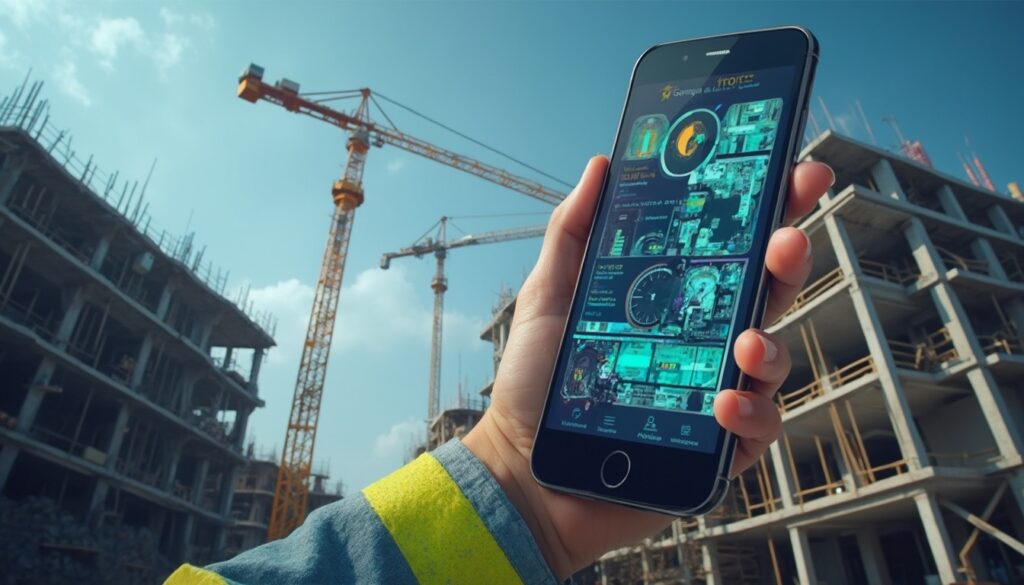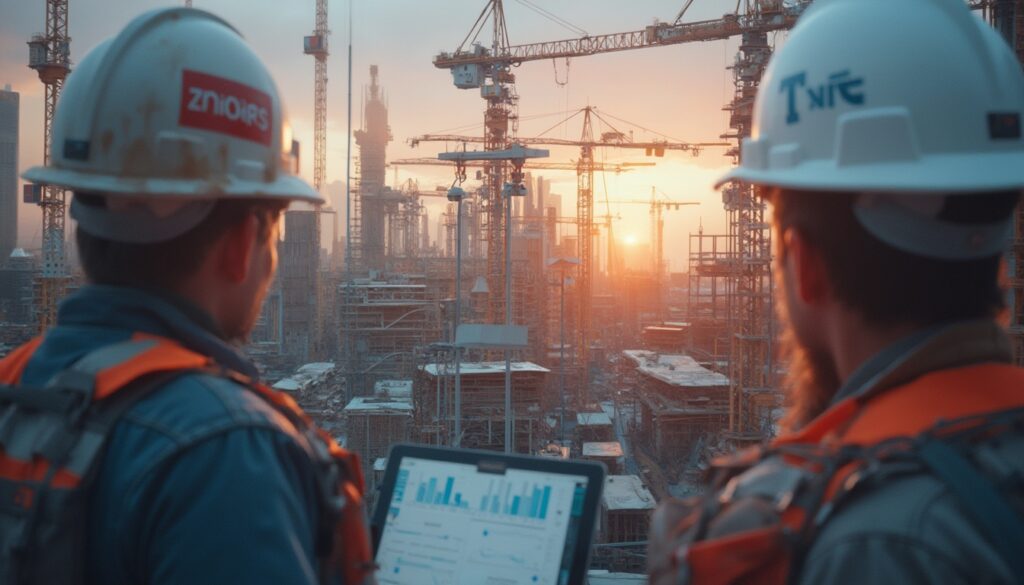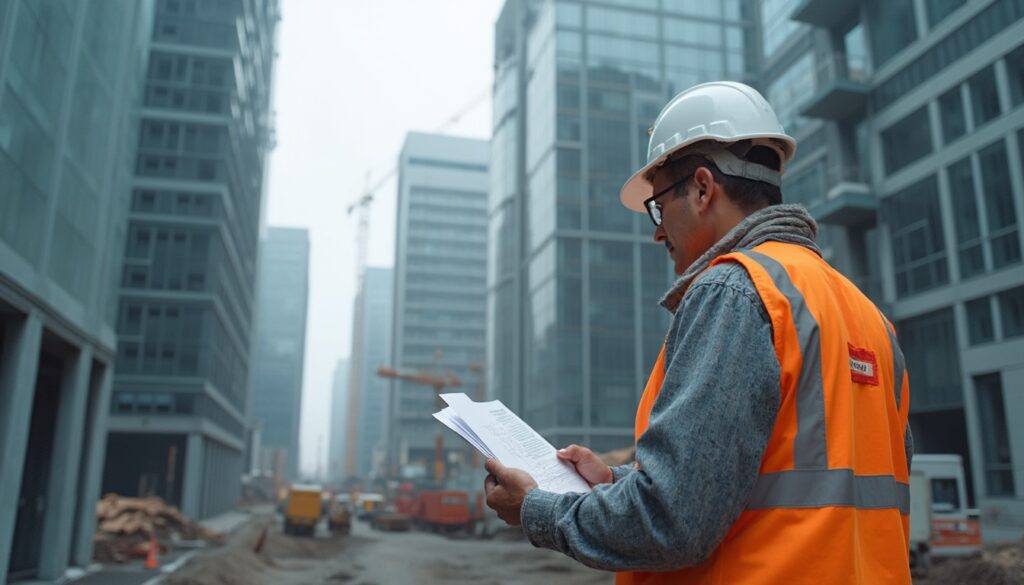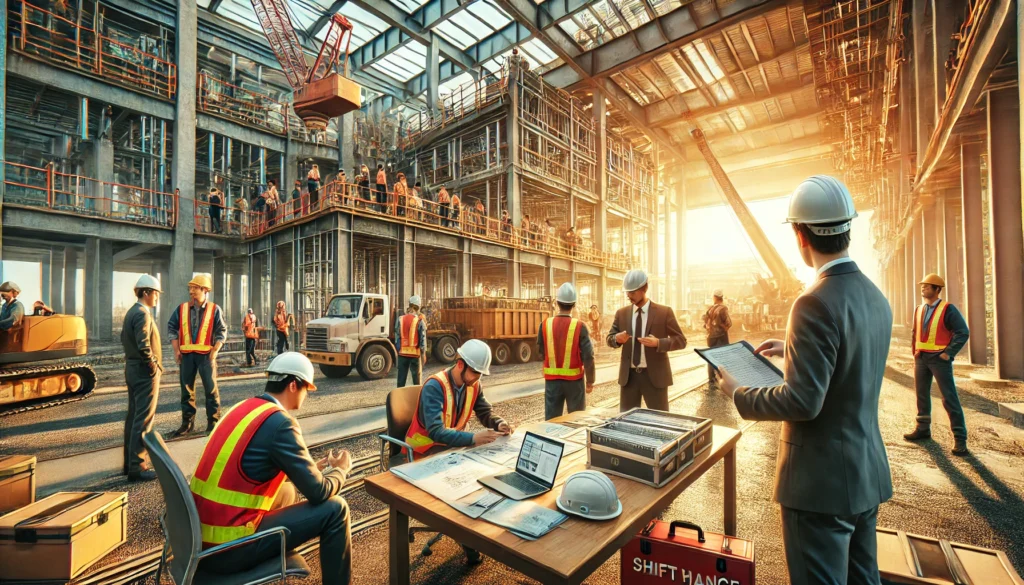Table of Contents
- Drones and Their Applications on Construction Sites
- The four most important rules for using drones on construction sites are: (Federal Ministry for Digital and Transport, 2025)
- Advantages of Drones on Construction Sites
- Operate drones yourself or hire an external provider?
- Conclusion: Drones are now indispensable on the construction site of tomorrow in the digital age
written by: Marc Weimann
A drone is referred to as a UAS (unmanned aircraft system), which translates to ‘unmanned aircraft system’ in German (German Federal Aviation Office, 2025). The use of drones has grown significantly in popularity, especially in private use over the past few years. However, the use of drones on construction sites is no longer a thing of the future but has become a reality, providing a multitude of meaningful applications. Nevertheless, the potential offered by the use of drones is by far not fully exploited. This article showcases the applications of drones on construction sites, outlines the legal framework, and introduces existing solutions and their providers.
Drones and Their Applications on Construction Sites
1. Aerial Photography and Documentation: Drones can be used to conduct surveillance of progress from the air for documentation purposes. There are already corresponding software solutions for processing the captured data. In addition, 3D models can be created from the images or recordings can be used for marketing purposes.
2. Surveying: Drones offer great potential for surveying buildings or areas. Unlike manual, time-consuming measurement, this task can be completed within minutes. When combined with GPS coordinates, photogrammetry software can create 2D and 3D models and maps.
3. Indoor or Channel Operations: Drones can conduct detailed condition assessments inside buildings or channels, for example, making thermal bridges visible with infrared sensors (Construction Portal, 4|2021).
4. Safety Checks and Inspections: In hard-to-reach or hazardous areas, drones can detect and examine hazards with low risk. The goal of BG Bau is to keep people away from danger zones (Construction Portal, 4|2021).
Legal Framework: Since early 2021, EU-wide regulations for drones have been in effect, based on the EU Commission’s decision in 2019. Nationally, Air Traffic Act, Aviation Regulation, and Aviation Ordinance govern the use and incorporate EU guidelines.
The four most important rules for using drones on construction sites are: (Federal Ministry for Digital and Transport, 2025)
1. Operating Categories for Drones
- Open: up to 25 kg take-off weight, max. 120 m height, no dangerous goods. Division into A1 (
- Specific: Operational range beyond the ‘open’ category.
- Requires Approval: Operation of larger, heavier drones for transport, for example.
2. Registration Requirement
Registration required for drones > 250 g or with sensors that collect personal data, as well as for drones requiring approval.
3. EU Competency Certification for Remote Pilots
Mandatory from 250 g take-off weight: Online theory test with the LBA; A2 additionally requires practical self-study and examination.
4. Permits and Approvals
Open Drones (
Advantages of Drones on Construction Sites
- Time Savings: Capturing large areas in minutes
- Cost Reduction: Less need for lifts or scaffolding
- High-Precision Measurement Data: Better planning and execution
- Automation: Data capture and analysis
- Increased Safety: Fewer hazards and accidents
- AI Utilization: Optimization of operations and data analysis
With further technologies, areas of application and advantages are expected to expand in the future.
Operate drones yourself or hire an external provider?
In-house operation offers cost and flexibility advantages with frequent use but does require acquisition and training costs. External providers like Airteam offer complete packages with approval, flight, and AI-supported data processing to create digital building models.
Conclusion: Drones are now indispensable on the construction site of tomorrow in the digital age
Drones offer tremendous potential to reduce costs and time requirements while increasing safety. In-house operation or service provider – drones are indispensable for the construction site of the future.
Use of icons, source: Icons made by Freepik from www.flaticon.com and by Smashicons from www.flaticon.com








